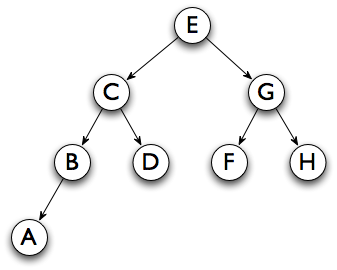The ACM's Code of Ethics states in section 1.5: Respect the work required to produce new ideas, inventions, creative works, and computing artifacts
- Skim the Code of Ethics, but read 1.5 more closely.
- Write a persuasive essay (single-spaced, 12 pt, 1-2 pages long)
in which you:
- State this ethical obligation and how it applies to your profession (as a student, software developer, or engineer) in general.
- Give a systematic argument in which you convince the reader through your reasoning that this ethical obligation is important for you and other software professionals to abide by.
- To support your argument, give three or more specific examples of professional activities where the ethical obligation applies. For each, explain how the obligation applies, especially why the activity is ethical or unethical according to this ethical obligation. One way to convince the reader it is important to you is if you choose at least one of the examples from your personal experience, so we recommend that.
If you prefer, you may select another section of the ACM Code of Ethics as the basis for your essay. If you do this, be sure to indicate which section you chose to elaborate.
Grading: If no sys argument, -3. If argument only includes 1 reason why ethical/unethical, -1. If only give 2 examples, -1. If only give 1 example, -3. If examples not developed, -2.
- Submit your essay to the Code of Ethics drop box.
You will submit the following to the WA3 dropbox:
(8 points) Consider the code:
for( int i = 1, i <= n; i++ ) {
for( int j = 1; j <= i * i; j++ ) {
if( j % i == 0) {
for( int k = 0; k < j; k++ ) {
sum++;
}
}
}
}
The condition on the innermost loop can cause you to overestimate big-Theta the runtime you would get it
you ignored it.
This problem is more complex than previous
problems of this type. As with our analysis of the cubic
algorithm for MCSS in class, you should first derive a (closed-form,
no-summation notation) formula for the exact number of times that the
sum++ statement executes. Be sure
to explain what you are doing, not just write equations. You should see a pattern that will let you use
a summation. Use your derived formula to state a big-Theta estimate; you can use the usual
shortcut of dropping lower-order terms and constant factors only at
this last stage.
(7 points) It is useful to have a unique representation
of binary trees that can be written compactly. For simplicity, we
assume that each node of the tree will contain one
Character. We represent a tree by a pair of strings, which
I call chars and children.
The chars is a pre-order
listing of the contents of the nodes. The children
string tells about the children of the
corresponding node from chars as follows:
| 2 | The node has two children. |
| 0 | The node has no children. |
| L | The node only has a left child. |
| R | The node only has a right child. |
For example:
chars = "ELSPIPYR"; children = "220200L0";
represents the example "SLIPPERY" tree in our term
project.
chars = "FBADCEGIH"; children = "220200RL0";
represents the tree in this wikipedia page.
-
What are the values of
charsandchildrenfor the tree below?
-
For a different tree we have:
chars = "THEQUICKBROWN";
children = "2R220002R0RL0";Show the order of the nodes in an in-order traversal of the tree.
(7 points) Hint: use the given info to draw the tree!
THEQUICKLAZYFOX is the
pre-order traversal of a tree (one character per node).
QIUCEHLAZKFYTXO is the
in-order traversal of the same tree.
What is the order of the nodes in the level-order traversal of this tree?
